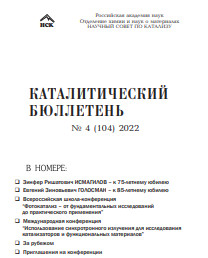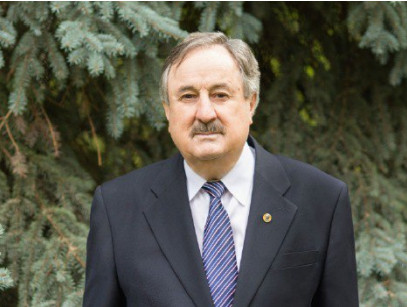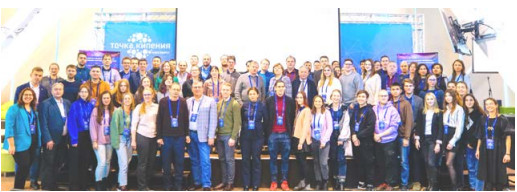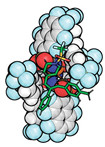

15 октября 2022 года исполнилось 75 лет выдающемуся ученому в области гетерогенного катализа, углехимии и химии углеродных материалов, научному руководителю Федерального Исследовательского Центра угля и углехимии СО РАН, главному научному сотруднику ФИЦ «Институт катализа им. Г.К. Борескова СО РАН», академику Российской академии наук Зинферу Ришатовичу Исмагилову.
В области гетерогенного катализа З.Р. Исмагиловым внесен значительный вклад в разработку научных основ синтеза носителей и катализаторов, под его руководством выполнены фундаментальные исследования механизма ряда каталитических реакций изотопными, кинетическими и физико-химическими методами.
Были проведены пионерские исследования гетерогенно-гомогенного механизма каталитических реакций окисления углеводородов и спиртов методом прямой регистрации радикалов в газовой фазе над катализатором. Изучена стабилизация ионов меди в виде цепочечных оксидных (1-D) наноструктур в каналах цеолита ZSM-5, выявлены особенности электронного строения медь-оксидных кластеров и окислительно-восстановительные свойства. Установлена локализация нанокластеров молибдена в высокоупорядоченных пористых каналах цеолита, разработаны методы синтеза катализаторов для конверсии метана в бензол и водород.
Впервые установлено явление термоактивации оксидов урана при высоких температурах с формированием рентгеноаморфного наноразмерного оксида урана с определенным соотношением валентных состояний, обеспечивающее высокую каталитическую активность.
В химии углеродных наноматериалов под руководством академика Исмагилова выполнен большой цикл работ по синтезу и исследованию закономерностей формирования углеродных нановолокон, детально изучены структурные, текстурные, адсорбционные и электрофизические свойства. Разработаны оригинальные методики модифицирования углеродных наноматериалов, позволяющие варьировать содержание гетероатомов азота и кислорода и их состояние.
В области углехимии под руководством З.Р. Исмагилова впервые создан банк углей Кузбасса, выполнены фундаментальные исследования структуры ископаемых углей современными физико-химическими методами, разработаны научные основы пиролиза и газификации углей, получения индивидуальных продуктов углехимии и коксохимии и методов их очистки, установлены закономерности содержания полиароматических углеводородов в ряду метаморфизма углей.
Впервые исследованы реакции окислительных превращения ископаемых углей под воздействием лазерного излучения. С применением импульсного лазера выявлен механизм зажигания углей, включающий микросекундные стадии разогрева поверхности, выделения летучих и их горение в газовой фазе и последнюю стадию горения твердого коксового остатка.
Фундаментальные исследования, выполненные под руководством З.Р. Исмагилова, имеют инновационное направление с реальным выходом на создание новых продуктов и технологий, в том числе: в 1982 году он возглавил отдел в Институте катализа СО РАН по тематике каталитических генераторов тепла и эта технология доведена до промышленного применения, производство сферических алюмооксидных носителей для катализаторов, технология производства сотовых блочных катализаторов, прямое каталитическое окисление сероводорода до элементарной серы – процесс ДИРОКС освоен на нескольких промышленных установках очистки попутного нефтяного газа в Татарстане и на стадии строительства в нескольких нефтяных компаниях, катализаторы глубокой гидроочистки топлив, окислительная очистка моторных топлив от соединений серы, каталитические технологии очистки дымовых газов от оксидов азота (DeNOx) и от оксидов серы (DeSOx), декарбонизация ‒ удаление и переработка углекислого газа, получение “голубого” водорода путем парового, “сухого” и автотермического риформинга и парциального окисления метана, технологии переработки жидких радиоактивных отходов, переработка соединений обедненного урана в уникальные катализаторы, синтез углеродных нановолокон и нанотрубок для хранения водорода и электрохимических систем хранения энергии.
Зинфер Ришатович Исмагилов – ученый с мировым именем, организатор и научный руководитель ряда международных проектов: 9 проектов Международного научно-технического центра МНТЦ, 7 – NWO, 2 – COPERNICUS, 4 – INTAS, 3 – NEDO, в том числе, с национальными лабораториями США, с университетами и научно-исследовательскими центрами промышленных компаний многих стран (LLNL, PNNL, UOP, Engelhard, ECN, Siemens, Bayer, Total, BNFL, Nippon Steel, KIER и другие).
Организатор и участник многих международных конференций и конгрессов, единственный российский участник всех Международных конгрессов по катализу, начиная с VII конгресса (Токио, 1980).
Библиографический список публикаций З.Р. Исмагилова с соавторами составляет 600 статей по базе WoS, цитирований 5780, индекс Хирша 35. По базе РИНЦ: 1550, 11030 и 44. Более 170 авторских свидетельств СССР и патентов, в том числе более 20 зарубежных патентов совместно с Saudi Aramco и JATIS.
В настоящее время З.Р. Исмагилов – член Президиума СО РАН, член бюро ОУС по химическим наукам СО РАН, Научного совета РАН по катализу, Научного совета РАН по химии ископаемого и возобновляемого углеродсодержащего сырья, главный редактор журнала “Химия в интересах устойчивого развития/ Chemistry for sustainable development”, член редколлегии журнала “Химия твердого топлива” и нескольких российских и международных журналов.
Зинфер Ришатович ведет активную работу по подготовке научных кадров, заведует кафедрой в КузГТУ в
Талант организатора науки Зинфер Ришатович реализовал в полной мере, будучи заместителем генерального директора МНТК «Катализатор» (1988-1992) и внес значительный вклад в начальные стадии организации отечественного производства катализаторов для автомобильных нейтрализаторов. В 2010 году избран директором Института углехимии и химического материаловедения СО РАН в г. Кемерово. Под его руководством состоялось успешное становление нового Института, который с 2015 года входит в состав Федерального Исследовательского Центра угля и углехимии СО РАН, который З.Р. Исмагилов возглавляет в качестве научного руководителя с 2020 года.
З.Р. Исмагилов вносит значительный вклад в устойчивое и поступательное развитие академической науки в Кузбассе, это отмечено региональными наградами: Медаль “70 лет Кемеровской области”, Орден Почета Кузбасса (2012), Почетный профессор Кузбасса (2017), Золотой знак “Кузбасс” (2021).
З.Р. Исмагилов – Заслуженный деятель науки РФ (1999), лауреат премии им. В.А. Коптюга РАН (2005), Почетный член Академии наук Республики Татарстан (2016), лауреат премии Правительства РФ в области науки и техники (2021), лауреат международной премии «Глобальная Энергия» (2021).
Научный совет по катализу ОХНМ РАН и редакция Каталитического бюллетеня сердечно поздравляют Зинфера Ришатовича с юбилеем, желают ему крепкого здоровья и новых успехов!

27 декабря 2022 года отметил свой 85-й день рождения известный специалист в области промышленного катализа, главный научный сотрудник ООО НИАП-КАТАЛИЗАТОР, Заслуженный химик России, общественный деятель, доктор химических наук, профессор Евгений Зиновьевич Голосман.
Е.З. Голосман известен своими достижениями в научной деятельности, созданием научной школы, масштабным внедрением разработанных катализаторов с многомиллиардным экономическим эффектом в химической, металлургической, нефтехимической, пищевой, медицинской, атомной, оборонной и других отраслях промышленности, а также в сфере коммунального хозяйства, преподавательской деятельностью в НИ РХТУ им. Д.И. Менделеева и активной общественной работой.
Деятельность профессора Е.З. Голосмана тесно связана с Новомосковским филиалом государственного института азотной промышленности и продуктов органического синтеза (НИАП-КАТАЛИЗАТОР), куда он пришел в 1962 г. после окончания Московского химико-технологического института им. Д.И. Менделеева. Евгений Зиновьевич создал и возглавил сектор (1966 г.), лабораторию (1971 г.), а затем (1978 г.) хорошо оснащенный приборами и установками большой отдел физико-химических и аналитических исследований, стандартизации и качества в институте, который являлся одним из крупнейших центров страны по разработке, исследованию и наработке промышленных катализаторов. С 2011 года – главный научный сотрудник «НИАП-КАТАЛИЗАТОР».
Евгений Зиновьевич – действительный член Российской инженерной академии и Международной академии экологии, профессор кафедры химической технологии неорганических веществ Новомосковского института РХТУ им. Д.И. Менделеева.
Под руководством Е.З. Голосмана и при его непосредственном участии создано новое научное направление – химия приготовления оксидных и металлоксидных цементсодержащих катализаторов для широкого круга органических, неорганических и экологических процессов. В соответствии с разработанной малоотходной технологией организовано промышленное производство цементсодержащих катализаторов в катализаторном цехе «НИАП-КАТАЛИЗАТОР», катализаторном производстве Дорогобужского ЗАУ и др.
Е.З. Голосман принимал участие в испытаниях и внедрении в промышленность ряда разработанных катализаторов на химических, металлургических, машиностроительных, нефтехимических заводах. В первую очередь, для процессов метанирования, получения защитных атмосфер, синтеза бутиловых спиртов, анилина, низкотемпературной конверсии оксида углерода и др. на Новомосковской АК «Азот», «Салаватнефтеоргсинтез», Новолипецком, Магнитогорском, Белорецком, Мариупольском, меткомбинатах, Запсибе, Омском заводе «Химпром», Черкасском, Придонском, Северодонецком, Череповецком, Гродненском, Кирово-Чепецком, Березниковском, Щекинском, Одесском, Невинномысском, Тольяттинском, Куйбышевском, Дорогобужском азотных заводах, «Нижнекамскнефтехим», «Ангарскнефтехим», Кировоградском заводе «Пишмаш», заводе «Микропровод» (Подольск), Северском, Первоуральском трубных заводах, Ленинабадском комбинате редких металлов (г. Чорух-Дайрон, Таджикистан), Узбекском металлургическом заводе, адронном коллайдере в Швейцарии и др.
Под научным руководством профессора Е.З. Голосмана разработаны и внедрены в промышленность катализаторы разложения озона, созданы высокоэффективный катализатор метанирования, катализаторы очистки газов от закиси азота, катализаторы получения водородсодержащего газа для топливных элементов. Разработанные и синтезированные неплатиновые катализаторы внедрены и эксплуатируются на 170 заводах и организациях РФ, СНГ и дальнего зарубежья.
Профессор Е.З. Голосман внес существенный вклад в подготовку научных кадров: под его руководством выполнено более 200 научно-исследовательских дипломных работ студентов, защищено 12 кандидатских диссертаций. Автор более 600 публикаций, в том числе более 300 статей, четырех монографий, около 100 изобретений и патентов (как российских, так и иностранных), более 300 тезисов докладов научных конференций и др.
Евгений Зиновьевич активно занимается научно-организационной работой. Вице-президент Тульского областного правления Союза научных и инженерных общественных объединений, заместитель председателя Российского химического общества им. Менделеева Тульской области, член центрального правления РХО им. Менделеева. Член редколлегии журнала «Катализ в промышленности» и бюллетеня «Химия в России». Занесен в Книгу Почета НИАП, награжден Почетным Знаком Губернатора Тульской области «Общественное признание», имеет другие награды. В 2017 году профессор Е.З. Голосман стал лауреатом премии Правительства Российской Федерации в области науки и техники, в 2018 году награжден золотой медалью им. В.Г. Шухова и медалью «Лучший изобретатель Тульской области», в 2021 году получил звание Ветерана Химпрома и медаль имени академика В.А. Легасова, в 2022 году – орден «Инженерная слава» Российской инженерной академии.
Научный совет по катализу ОХНМ РАН и редакция Каталитического бюллетеня сердечно поздравляют Евгения Зиновьевича с юбилеем, желают ему крепкого здоровья и дальнейшей успешной работы!
Всероссийская школа-конференция
«ФОТОКАТАЛИЗ – от фундаментальных исследований до практического применения»
6-7 октября 2022 г.
в режиме онлайн
http://conf.nsc.ru/photocat-50/ru
Всероссийская школа-конференция «Фотокатализ – от фундаментальных исследований до практического применения» была проведена с 6 по 7 октября 2022 года на базе Института катализа СО РАН (г. Новосибирск) в online-режиме.
Основными организаторами мероприятия выступили:
 | ФИЦ Институт катализа им. Г.К. Борескова СО РАН, Новосибирск, Россия |
 | Центр компетенций НТИ «Водород как основа низкоуглеродной экономики», Новосибирск, Россия |
 | Институт органической химии им. Н.Д. Зелинского РАН, Москва, Россия |
 | Новосибирский государственный университет, Новосибирск, Россия |
 | Сибирское отделение Российской академии наук, Новосибирск, Россия |
В 1972 году А. Фуджишима и К. Хонда опубликовали статью о расщеплении воды на водород и кислород с помощью электрокатализа, вызванного ультрафиолетовым излучением, с использованием диоксида титана в качестве фотоанода в электрохимической ячейке. С этого момента за прошедшие полвека исследования в области фотокатализа вышли на принципиально новый уровень. Существенно возросло понимание сути происходящих процессов, выросли активности современных фотокатализаторов, в том числе в видимой области спектра. Появились новые области применения фотокатализа помимо очистки воды и воздуха, теперь это также тонкий органический синтез, разложение воды и получение водорода, гидрирование СО2, азота и других веществ, преобразование световой энергии в электрическую, применение в биологии и живых системах и многое другое.
В России появилось многочисленные производители, выпускающие устройства, которые используют фотокатализ для очистки воздуха и обработки поверхностей. Это сыграло важную роль в период пандемии и позволило сохранить здоровье и жизни людей.
Вместе с тем, большое количество тематик и исследовательских коллективов, занимающихся фотокатализом в России, говорит о том, что настало время для обмена опытом и знаниями и консолидации усилий с целью дальнейшего развития исследований в области фотокатализа и их скорейшего внедрения в российскую экономику.
Научная программа школы-конференции включила в себя пять пленарных лекций, 10 ключевых лекций и два устных сообщения по следующим научным направлениям:
На открытии конференции с приветственным словом к участникам обратились председатель Сибирского отделения Российской академии наук академик РАН Валентин Николаевич Пармон и академик РАН Валентин Павлович Анаников, представляющий Институт органической химии им. Н.Д. Зелинского РАН (г. Москва). Валентин Николаевич в своем выступлении представил историческую ретроспективу развития фотокатализа в России. В частности, он отметил, что уже в феврале 1982 года на базе Института катализа СО РАН состоялась первая Всесоюзная конференция по химическим методам преобразования солнечной энергии, где одной из центральных тем являлась проблема фотокатализа.
В своей речи академик Анаников сосредоточился на тематике тонкого органического синтеза, как одного из магистральных направлений в органической химии. На протяжении долгого времени в органическом синтезе применялись фотохимические методики, однако, как правило, это было ультрафиолетовое излучение с большими энергетическими характеристиками. Настоящим прорывом в отрасли стало появление фоторедокс-катализа и новых типов катализаторов как на основе органических красителей, так и на основе комплексов металлов, что дало мощный импульс развитию органического синтеза. В результате многие реакции в настоящее время проводятся с использованием видимого света, или света, который дают светодиодные системы, что удобно в применении и выгодно с экономической точки зрения. Завершая свое вступительное слово, Валентин Павлович отметил, что несмотря на большую популярность фоторедокс-катализа в мире, на территории России проводится не так много конференций, затрагивающих эту тематику, и данная школа-конференция поднимает по-настоящему актуальные вопросы в своей научной программе.
В ходе конференции были представлены следующие пленарные и ключевые лекции, а также устные доклады:
Пленарные лекции
д.х.н. Надточенко Виктор Андреевич
ФИЦ химической физики им. Н.Н. Семенова РАН, Москва, Россия
Первичные фотопроцессы в полупроводниковых фотокаталитических системах на примере квантовых точек
академик РАН Анаников Валентин Павлович
Институт органической химии им. Н. Д. Зелинского РАН, Москва, Россия
Фотокатализ для органического синтеза
д.х.н., профессор РАН Калинина Мария Александровна
Институт физической химии и электрохимии им. А.Н. Фрумкина, Москва, Россия
Супрамолекулярные гибридные материалы для гетерогенного фотокатализа
академик РАН Ремпель Андрей Андреевич
Институт металлургии УрО РАН, Екатеринбург, Россия
Нанопористый диоксид титана для фотокаталитических приложений
д.х.н. Водянкина Ольга Владимировна
Томский государственный университет, Томск, Россия
Перспективы развития фотоактивных материалов на основе оксидов висмута и титана
Ключевые лекции
д.х.н., профессор РАН Козлова Екатерина Александровна
ФИЦ Институт катализа им. Г.К. Борескова СО РАН, Новосибирск, Россия
Фотокаталитическое получение водорода и восстановление СО2
д.х.н. Джабиев Таймураз Савельевич
Институт проблем химической физики РАН, Москва, Россия
Фотоиндуцированное окисление воды, искусственный фотосинтез
к.ф.-м.н. Снытников Валерий Николаевич
ФИЦ Институт катализа им. Г.К. Борескова СО РАН, Новосибирск, Россия
Фото- и термокаталитические процессы при лазерной конверсии легких алканов
Bд.ф.-м.н. Солдатов Александр Владимирович
Южный Федеральный Университет, Ростов-на-Дону, Россия
Operando диагностика каталитических реакций с использованием синхротронного излучения и машинного обучения
д.ф.-м.н. Штарев Дмитрий Сергеевич
Дальневосточный федеральный университет, Владивосток, Россия
Висмутаты щелочноземельных металлов как новый перспективный класс фотокатализаторов с нетипичным положением энергетической щели
д.х.н. Сулейманов Евгений Владимирович
Национальный исследовательский нижегородский государственный университет им. Н.И. Лобачевского,
Нижний Новгород, Россия
Применение сложных оксидов в качестве фотокатализаторов практически важных процессов под воздействием видимого света
к.х.н. Селищев Дмитрий Сергеевич
ФИЦ Институт катализа им. Г.К. Борескова СО РАН, Новосибирск, Россия
Нанокомпозитные фотокатализаторы для очистки воздуха и обработки поверхностей
д.х.н. Ковальчукова Ольга Владимировна
Российский государственный университет им. А.Н. Косыгина (Технологии. Дизайн. Искусство), Москва, Россия
Перспективы и подходы к синтезу металло-оксидных фотокатализаторов для очистки сточных вод
к.х.н. Люлюкин Михаил Николаевич
ФИЦ Институт катализа им. Г.К. Борескова СО РАН, Новосибирск, Россия
Термо-фотокаталитическое окисление паров органических веществ: влияние температуры на спектральные и кинетические характеристики фотопроцесса
к.х.н. Грибов Евгений Николаевич
Применение (фото)электрохимических методов для характеризации полупроводниковых катализаторов
Устные доклады
к.т.н. Першин Антон Алексеевич
ООО "Завод Аэролайф", Калужская обл., д. Добрино, Россия
Развитие фотокаталитических систем для очистки воздуха в России: история, современность и вызовы
к.х.н. Манучарова Лориетта Андрониковна
Институт химической физики имени А.Б. Налбандяна НАН РА, Ереван, Республика Армения
Фотокаталитическое окисление хлорсодержащих фенилалканов в присутствии допированных нанотитаноксидных катализаторов
Научная программа конференции вызвала большой интерес у всех участников мероприятия. Всего в конференции приняли участие более 180 исследователей. Из Азербайджана (Баку) – 2, Армении (Ереван) – 4 и городов России: Альметьевск – 2, Апатиты – 3, Белгород – 4, Владивосток – 1, Екатеринбург – 10, Зеленоград – 2, Иваново – 2, Ижевск – 1, Иркутск – 1, Казань – 2, Кемерово – 1, Красноярск – 1, Москва – 56, Нижний Новгород – 7, Новосибирск – 20, Новочеркасск – 2, Омск – 1, Оренбург – 1, Пермь – 2, Петрозаводск – 2, Ростов на Дону – 8, Самара – 8, Санкт-Петербург – 18, Саранск – 2, Саратов – 1, Томск – 15, Уфа – 4, Челябинск – 2.
В ходе церемонии закрытия многими участниками было высказано предложение перевести конференцию в очный режим и сделать мероприятие регулярным. Видеозаписи лекций, а также другие материалы конференции доступны на официальном сайте: http://conf.nsc.ru/photocat-50/ru/
Конференция была проведена под эгидой 300-летия Российской академии наук.
Материал подготовили:
Д.В. Козлов, С.С. Логунова
Институт катализа им. Г.К. Борескова СО РАН
Международная конференция
«Использование синхротронного излучения для исследования катализаторов и функциональных материалов»
31 октября – 3 ноября 2022 г.
http://conf.nsc.ru/SRTCFM-2022/en
С 31 октября по 3 ноября 2022 г. в Новосибирске прошла Международная конференция «Использование синхротронного излучения для исследования катализаторов и функциональных материалов» (International Conference «Synchrotron Radiation Techniques for Catalysts and Functional Materials»). Основным организатором конференции выступил Институт катализа СО РАН, при содействии ЦКП "СКИФ", Института ядерной физики СО РАН и Новосибирского государственного университета. Конференция проводилась в рамках реализации проекта «Инструментально-методическое развитие уникальной научной установки Станция EXAFS спектроскопии "Сибирского центра синхротронного и терагерцового излучения" и реализация на ней программы масштабных научных исследований мирового уровня с целью получения прорывных результатов в области катализа, зеленой энергетики и фундаментальной медицины», финансируемого Министерством науки и высшего образования РФ (в рамках Соглашения от 20.04.2022 № 075-15-2022-263).
В качестве места проведения мероприятия было выбрано пространство коллективной работы – «Точка кипения» (Новосибирский Академпарк). Конференция прошла в очном режиме с элементами онлайн. В конференции приняли участие более 170 человек. Из Азербайджана (Баку) – 1, Германии (Гейдельберг) – 1, Донецка – 1, Италии (Триест) – 1 и городов России: Воронеж – 3, Екатеринбург – 6, Иваново – 1, Ижевск – 3, Казань – 1, Калининград – 1, Кемерово – 2, Красноярск – 7, Москва – 21, Нижний Новгород – 4, Новосибирск – 86, Ростов на Дону – 14, Санкт-Петербург – 13, Томск – 2, Тюмень – 3. Для зарубежных участников, а также для тех, кто не смог присутствовать на конференции лично, на протяжении всего мероприятия велась онлайн-трансляция всех лекций и докладов.

Всего в ходе конференции было представлено 7 пленарных лекций (40 мин.), 25 устных докладов (20 мин.) и 37 стендовых докладов по направлениям:
1. Theoretical and applied aspects of experimental techniques utilizing synchrotron radiation
2. Structure-driven design of catalysts and functional materials based on synchrotron diagnostics
3. Synchrotron radiation for structural biology
4. Development of instrumentation for synchrotron beamlines
5. New data processing algorithms, artificial intelligence and machine learning in bulk data analysis
6. Update on the status and scientific program of the Synchrotron Radiation Facility SKIF
Поскольку конференция имела статус международной, в качестве рабочего языка мероприятия был выбран английский.
В ходе научной программы конференции были представлены следующие пленарные лекции:
чл.-корр. РАН, д.ф.-м.н. Левичев Евгений Борисович
Центр коллективного пользования "Сибирский кольцевой источник фотонов" (ЦКП «СКИФ»), Новосибирск, Россия
Статус реализации проекта создания источника синхротронного излучения "СКИФ" (The status of the implementation of the Synchrotron Radiation Facility "SKIF")
д.ф.-м.н. Гуда Александр Александрович
Южный федеральный университет, Ростов-на-Дону, Россия
Online precise analysis of X-ray spectral data powered by machine learning algorithms
доктор Майя Кискинова
Синхротрон «Elettra» (Elettra Synchrotron), Триест, Италия
Advanced synchrotron-based techniques shedding light on
properties of morphologically complex functional materials
к.х.н. Булавченко Ольга Александровна
Институт катализа СО РАН, Новосибирск, Россия
Application of in situ X-ray diffraction to study oxide and metal oxide catalysts
д.х.н. Биляченко Алексей Николаевич
Институт элементоорганических соединений им. А.Н. Несмеянова РАН, Москва, Россия
Functional cagelike metallasesquioxanes: (supra) molecular design in the focus of X-ray diffraction studies
профессор Михаил Жарников
Гейдельбергский университет (University of Heidelberg), Гейдельберг, Германия
Modern applications of synchrotron soft X-ray spectroscopy to functional organic thin films
д.т.н. Батаев Иван Анатольевич
Новосибирский государственный технический университет, Новосибирск, Россия
Probing the surface of steels during friction with synchrotron
X-ray microbeam
По итогам устных и стендовой сессий конференции организационным комитетом были выбраны лучшие устные и стендовые доклады.
В номинации «Лучший устный доклад» победителями стали:
Скорынина Алина Александровна (первое место)
Южный федеральный университет, Ростов-на-Дону, Россия
In Situ Time-Resolved XAS Study of Core@Shell Pd@PdO Structures
Лазаренко Владимир Александрович (второе место)
Национальный исследовательский центр "Курчатовский институт", Москва, Россия
Evolution of the Experimental Capabilities of the “XSA” and “Belok” Beamlines of the Kurchatov Synchrotron Radiation Source for Single Crystals X-Ray Diffraction Analysis
of Molecules with Various Complexity
Приядаршани Раджпут (третье место)
Южный федеральный университет, Ростов-на-Дону, Россия
Microfluidic Technologies for Adsorption-Based Industrial Water Remediation
В номинации «Лучший стендовый доклад»:
Никитенко Денис Валерьевич (первое место)
Институт физико-органической химии и углехимии
им. Л.М. Литвиненко, Донецк
Identification of Platinum Iodo Complexes in the System
Pt(II) – NaI – СН3I – С2Н3I – Acetone Using Synchrotron X-Ray Absorption Spectroscopy
к.ф.-м.н. Меренцов Александр Ильич (второе место)
Институт физики металлов имени М.Н. Михеева Уральского отделения РАН, Екатеринбург, Россия
Electronic Structure of Cu0.5ZrSe2
Горкуша Александр Сергеевич (третье место)
Новосибирский государственный университет; Институт катализа СО РАН, Новосибирск, Россия
Influence of Synthesis Method on the Phase Composition, Structure, and Catalytic Activity of Strontium Titanium Oxides
Победителям были вручены дипломы и памятные сувениры.
Для участников и гостей конференции был организован специальный кинопоказ фильма «Властелины колец», снятого творческой командой ГТРК «Новосибирск». Это документальная лента о СКИФе (Сибирском Кольцевом Источнике Фотонов) – уникальной мега-сайенс установке, которую строят в наукограде Кольцово. Это флагманский научный проект региона и один из крупнейших в России за последние десятилетия. Фильм рассказывает об истории появления и использования синхротронного излучения в России и мире, о развитии проекта СКИФ, его уникальных характеристиках, задачах в интересах науки и промышленности. После показа фильма была организована дискуссия со специально приглашенными экспертами, среди которых были:
Евгений Левичев, директор ЦКП «СКИФ», чл.-корр. РАН;
Ян Зубавичус, заместитель директора ЦКП «СКИФ» по научной работе, доктор физико-математических наук;
Александр Маликов, заведующий лабораторией Лазерные технологии ИТПМ СО РАН, доктор технических наук;
Андрей Бухтияров, заведующий отделом синхротронных исследований ЦКП «СКИФ», координатор разработки и создания станции ЦКП «СКИФ» «Электронная структура», кандидат химических наук;
Владимир Коваль, заместитель директора ИХБФМ СО РАН по научной работе, руководитель Объединенного центра геномных, протеомных и метаболомных исследований ИХБФМ СО РАН, кандидат химических наук.
Кинопоказ был организован ГАУ НСО «Новосибирский областной инновационный фонд», пространство коллективной работы «Точка кипения — Новосибирск», при партнерстве ЦКП «СКИФ» и ИК СО РАН.
В рамках конференции также была проведена Школа молодых ученых по синхротронным методам исследования в материаловедении (2-3 ноября 2022 г.). Основным организатором школы выступил Новосибирский государственный университет. Главными целями проведения Школы молодых ученых стали популяризация научной деятельности и привлечение молодых ученых к перспективным разработкам в области материаловедения.
Научная программа Школы молодых ученых состояла из 4 пленарных лекций (50 минут), 22 устных докладов (10 минут) и 36 стендовых докладов по следующим направлениям:
На Школе молодых ученых были представлены следующие пленарные лекции:
к.г.-м.н. Сергей Владимирович Ращенко
Институт геологии и минералогии им. В.С. Соболева, Новосибирск, Россия
Установки синхротронного излучения
к.х.н. Юрий Васильевич Ларичев
Институт катализа СО РАН, Новосибирск, Россия
Особенности использования метода МУРР для анализа твердофазных наноматериалов
д.х.н. Александр Александрович Корлюков
Институт элементоорганических соединений
им. А.Н. Несмеянова РАН, Москва, Россия
Комбинированные рентгенодифракционные
и квантовохимические исследования для создания новых лекарственных форм
д.ф.-м.н. Арам Лусегенович Бугаев
Международный исследовательский институт интеллектуальных материалов Южного федерального университета, Ростов-на-Дону, Россия
Спектроскопия рентгеновского поглощения в гетерогенном и гомогенном катализе
По итогам Школы молодых ученых также был проведен конкурс на лучшие доклады. Решением организационного комитета были выбраны следующие победители:
Харченко Надежда Алексеевна
(лучший устный доклад на Школе молодых ученых I степени)
Институт катализа СО РАН; Новосибирский государственный университет, Новосибирск, Россия
Структурная диагностика никельсодержащих катализаторов Ni-Ce1-xZrxO2 для процессов метанирования оксидов углерода
Сметанина Ксения Евгеньевна
(лучший устный доклад на Школе молодых ученых II степени)
Национальный исследовательский Нижегородский
государственный университет им. Н.И. Лобачевского,
Нижний Новгород, Россия
Послойный рентгеновский фазовый анализ керамических образцов на основе карбида вольфрама
Проценко Богдан Олегович
лучший устный доклад на Школе молодых ученых III степени)
Международный исследовательский институт интеллектуальных материалов, Ростов-на-Дону, Россия
Инфракрасная спектроскопия как инструмент для исследования структуры гидрида палладия
Коцун Алена Андреевна
(лучший стендовый доклад на Школе молодых ученых I степени)
Институт неорганической химии им. А.В. Николаева СО РАН, Новосибирск, Россия
Наноструктурированные материалы на основе MoS2
и восстановленного оксида графена и их электрохимические свойства в литий- и натрий-ионных аккумуляторах
Голубков Виктор Александрович
(лучший стендовый доклад на Школе молодых ученых II степени)
Институт химии и химической технологии СО РАН,
Красноярск, Россия
Комплексные исследования структуры и свойств нанесённых Ru/C катализаторов селективного гидрирования глюкозы с использованием дифракционных и спектральных методов
Суханов Андрей Евгеньевич
(лучший стендовый доклад на Школе молодых ученых III степени)
ФНИЦ «Кристаллография и фотоника» РАН; НИЦ «Курчатовский институт», Москва, Россия
Исследование формирования кластеров-прекурсоров
в водном растворе дигидрофосфата калия методом МУРР
Победители были награждены на торжественной церемонии закрытия Школы молодых ученых, им были вручены дипломы и подарки от организаторов.
Организаторы благодарят ООО «Группа Ай-Эм-Си» (Москва) и ООО «Адватекс» (Москва) за учреждение премий для призеров конкурсов лучших докладов конференции и школы молодых ученых.

Предполагается, что Международная конференция «Использование синхротронного излучения для исследования катализаторов и функциональных материалов» станет ежегодной. Проведение следующей конференции запланировано на осень 2023 года.
Материал подготовили:
Я.В. Зубавичус, С.В. Цыбуля, В.В. Каичев, К.И. Шефер, С.С. Логунова, М.С. Суворова
Институт катализа им. Г.К. Борескова СО РАН
Confined in a catalyst, this reactive intermediate can enan-tioselectively insert into a C–H bond
In the realm of reactivity, the vinyl carbocation is a beast so fleeting, so keen to combine or rearrange, that many have doubted that it can be tamed to create molecules in a stereoselective way. But by confining a vinyl carbocation within a bulky catalyst, chemists have now shown they can coax this wildly reactive intermediate to insert itself into a car-bon-hydrogen bond in an enantioselective manner.
 Confined to an organic catalyst (space-filling model), this vinyl carbocation substrate (stick model) is poised to react stereoselectively.
Confined to an organic catalyst (space-filling model), this vinyl carbocation substrate (stick model) is poised to react stereoselectively.
The work comes from the collaboration of researchers in Hosea M. Nelson’s group at the California Institute of Technology, Matthew S. Sigman’s group at the University of Utah, and K. N. Houk’s group at the University of California, Los Angeles.
“Historically, we’ve really struggled to make these cations catalytically and use them in synthesis,” says Sepand K. Nistanaki, a graduate student in Nelson’s lab who is the paper’s first author. “The fact that these types of carbocations can do this C–H insertion chemistry is fundamentally unique and interesting and, we think, synthetically is going to be very powerful for chemists.”
When the researchers in Nelson’s group started this project, they didn’t know if they would be able to harness the vinyl carbocation intermediates because of their extreme reactivity. After screening dozens of catalysts, the chemists found that a family of imidodiphosphorimidate organocatalysts developed by Ben List’s lab at the Max Planck Institute for Kohlenforschung were able to create and confine the vinyl cation in such a way that it would only react to form one of two possible enantiomers in a C–H insertion reaction. The chemists liken the catalyst to an enzyme in that it is able to exert stereocontrol over a highly reactive intermediate (Science 2022, DOI: 10.1126/science.ade5320).
Once his lab had observed enantioselectivity in the reaction, Nelson turned to Houk and Sigman to model the behavior computationally and verify that the reaction is indeed going through the vinyl carbocation. Now that chemists know these intermediates can be harnessed, Sigman says, they can be creative about what kind of molecules they make with this type of reaction.
“The C–H insertion of vinyl cations can be nearly barrierless,” says Matthias Brewer, a chemist at the University of Vermont who develops new reactions. “Imparting stereocontrol to this process with List’s chiral imidodi-phosphorimidate catalyst is a significant achievement,” he says in an email.
“The idea that carbocations as reactive as unstabilized vinyl cations could be engaged in highly enantioselective reactions would have seemed quite unlikely until recently,” says Harvard University’s Eric N. Jacobsen, who also develops new reactions. He says in an email that the work represents “a significant advance in asymmetric catalysis with highly reactive intermediates.”
The chemists think the area is still rich for exploration. Sigman says the information they’ve gleaned could help their team redesign the catalysts to be more practical. The chemists would also like to expand their substrates. In this work, the C–H insertion was an intramolecular transformation, in which the vinyl cation and the C–H bond were in the same molecule. Chloe G. Williams, another graduate student in Nelson’s lab, says she’d like to see the work extended to intermolecular reactions—in which the vinyl cation and the C–H bond it inserts into are on different molecules. She says the chemists would like to “understand how we can potentially use what we have learned throughout this project and apply that to other types of C–H insertion reactions to make more complex products stereoselectively.”
Recycling plastic waste using a low-cost catalyst
Hydrogenation converts polyethylene and other common polyolefins to low-mass hydrocarbons
An inexpensive catalyst can convert common commercial polymers to low molecular mass hydrocarbons under mild conditions, according to a new study. The advance may lead to cost-effective ways to produce liquid fuels and fine chemicals from plastic waste.
Researchers worldwide are developing methods for recycling plastics by chemically decomposing polymers into smaller molecular units and reusing them. Pyrolysis, for example, an approach backed by major chemical companies, converts plastics to pyrolysis oil, which can be used as a fuel or a feedstock to make other compounds. But this process is energy intensive—it often runs at 500 °C, and it produces a large mixture of products and carbonaceous waste.
Catalytic depolymerization can be more selective. And recent studies have shown that catalytic hydrogenolysis, which uses hydrogen to decompose plastics, is effective in breaking down polyethylene, polypropylene, and other common polyolefins, which tend to be fairly inert because of their strong carbon-carbon bonds. But hydrogenolysis generally uses platinum or other expensive catalysts, and it requires high temperatures and long reaction times.
To get around those shortcomings, a team of researchers based at Northwestern University looked for a highly active earth-abundant catalyst that quickly drives hydrogenolysis of polyolefins under mild conditions. Led by Michael J. Bedzyk, Yosi Kratish, and Tobin J. Marks, the team reports that they came up with an organozirconium compound supported on sulfated alumina that does the job well (Nat. Commun. 2022, DOI: 10.1038/s41467-022-34707-6).
The team studied decomposition of several polymer samples, including polypropylene, polyethylene food packaging, polyethylene copolymers, and other types of polyethylene. In one test, they found that treating 1.5 g of polyethylene with 202 kPa (2 atm) of hydrogen at 200 °C in the presence of a small amount of the catalyst completely converted the polymer to liquid and gas products in just 45 minutes. Other samples also quickly turned into low-weight hydrocarbon products. The team’s experimental and computational investigations indicate that decomposition occurs via a C–C bond scission step rather than by way of σ-bond metathesis, which is common for other catalysts.
Colorado State University’s Eugene Chen says that one of the most intriguing aspects of this “exciting and insightful” work is that the proposed catalytic species responsible for this fast polyolefin deconstruction also represents the form of a polymerization catalyst that converts α-olefins to polyolefins. “It’s conceivable that this catalyst could be used for both polyolefin production and deconstruction simply by switching hydrogen on and off and adjusting the reaction temperature,” he says.
Susannah L. Scott of the University of California, Santa Barbara, says it’s remarkable that the active form of the catalyst appears to be air stable. This is important, she explains, because real plastic waste will have many different contaminants that the catalyst must tolerate. She notes, however, that the quantity of hydrogen used in this study may represent a challenge for a large-scale process. To convert all the world’s polyole-fin waste in this way would require a significant fraction of current world hydrogen production, she says.
This catalyst is a golden egg
Eggshells impregnated with gold nanoparticles make an easy, cheap, and reusable ‘megacatalyst’
By infusing eggshells with gold nanoparticles, researchers have made a low-cost, sustainable catalyst that can be reused and eventually recycled (ACS Appl. Mater. Interfaces 2022, DOI: 10.1021/acsami.2c13564). They used the robust “megacatalyst” to detoxify dye waste and run other organic reactions by dropping the eggshell catalyst into reaction solutions, and they could simply remove it by hand when done.
Typically, to make nanoparticle catalysts easy to reuse, chemists anchor them to porous materials such as hydrogels and metal-organic frameworks. These impregnated materials are easy to separate from a reaction mixture, but making them is laborious and expensive. Also, recovering the metal from the support material usually requires time- or energy-intensive methods like magnetic separation and centrifugation.
Anil K. Suresh of SRM University, Andhra Pradesh, and colleagues chose eggshells as supports because of their high porosity and large surface area with a protein layer rich in amino acids. The team dipped waste eggshells collected from restaurants in a suspension containing gold chloride for 6 h, and amino acids on the shells reduced the gold ions to form crystalline gold nanoparticles. Suresh claims this is the simplest synthesis of a supported catalyst ever reported.
The researchers tested the recyclability of the eggshell catalyst by using it to detoxify dye waste from local textile operations. They reused the eggshell 14 times to break down a total of 2.8 L of waste. They also used a gold-infused eggshell to make several grams of a precursor to aceta-minophen by hydrogenating 4-nitrophenol, with a conversion efficiency of 99%.
Dipping the eggshell in nitric acid and hydrochloric acid dissolved the protein layer on its surface, releasing the nanoparticles and allowing the team to recoup about 77% of the gold. Suresh says he and his colleagues have also have grafted catalytic silver and copper oxide on eggshells and are now working on methods to do this for platinum and palladium.
Chemical & Engineering News
|
January
29 – February 3, 2023 European Winter Conference on Plasma Spectrochemistry Ljubljana, Slovenia |
https://ewcps2023.si/ |
|
February
8-10, 2023 12th Annual World Congress of Nano Science & Technology (Nano S&T-2023) Sapporo, Japan |
https://www.bitcongress.com/nanobiox2023/ |
|
February
11-12, 2023 Gordon Research Seminar – Chemical Reactions at Surfaces Lucca (Barga), LU, Italy |
https://www.grc.org/chemical-reactions-at-surfaces-grs-conference/2023/ |
|
February
20-22, 2023 7th International Conference on Catalysis and Chemical Engineering (CCE-2023) Las Vegas, NV, USA |
https://catalysis.unitedscientificgroup.org/conference-info |
|
March
8-9, 2023 6th Hydrogen & Fuel Cells Energy Summit Lisbon, Portugal |
https://www.wplgroup.com/aci/event/hydrogen-fuel-cells-energy-summit/ |
|
March
20-21, 2023 International Conference on Catalysis & Chemical Engineering Rome, Italy |
https://scisynopsisconferences.com/catalysis/ |
|
March
20-21, 2023 International Conference on Graphene & 2D Materials Dubai, UAE |
https://scisynopsisconferences.com/graphene/ |
|
April
2-5, 2023 Convention ‘Fuels and chemicals from synthesis gas: State of the art 4 (Syngas Convention 4) Cape Town, South Africa |
https://syngasconvention.com/ |
|
April
13-14, 2023 4th Global Summit on Catalysis and Chemical Engineering (Chemical Catalyst 2023) Rome, Italy |
https://catalysis.mindauthors.com/ |
|
May
15-17, 2023 Annual Meeting on Reaction Engineering DECHEMA-Haus, Frankfurt, Germany |
https://dechema.de/en/REACT2023.html |
|
16-18
мая 2023 г. VII Всероссийская научная молодежная школа-конферениця «Химия под знаком Сигма: исследования, инновации, технологии» Омск, Россия |
http://conf.nsc.ru/sigma-7/ru |
|
June
14-15,
2023 3rd Edition of Chemistry World Conference (Chemistry-2023) Rome, Italy |
https://chemistryworldconference.com/ |
|
июнь – июль
2023 г.
IV Всероссисйкая научно-практическая конференция с международным участием «Водород. Технологии. Будущее» |
|
|
July
2-6, 2023
9th Conference of the Federation of the European Zeolite Associations (FEZA 2023) Portorož-Portorose, Slovenia |
https://www.feza2023.org/en/ |
|
July
9-13, 2023 13th International Symposium on Scientific Bases for the Preparation of Heterogeneous Catalysts (PREPA 13) Louvain-la-Neuve, Belgium |
https://www.prepa13.org/ |
|
July
23-28, 2023 31st International Conference on Photochemistry Sapporo, Japan |
https://icp2023.jp/ |
|
July
2023 The 8th Asian Symposium on Advanced Materials |
|
|
July
30 – August 4, 2023 Gordon Research Conference – Photochemistry Lewiston, United States |
https://www.grc.org/photochemistry-conference/2023/ |
|
August
18-25, 2023 49th IUPAC World Chemistry Congress 2023 (IUPAC|CHAINS 2023) Hague, the Netherlands |
https://iupac2023.org/ |
|
August
27 – September 1, 2023 15th European Congress on Catalysis (EuropaCat 2023) Prague, Czech Republic |
https://www.europacat2023.cz/ |
| September
5-8, 2023 14th International Workshop on Polymer Reaction Engineering Potsdam, Germany |
https://dechema.de/en/PRE2023.html |
|
September
10-13,
2023 14th European Adhesion Conference & 7th World Congress on Adhesion and Related Phenomena (EURADH/WCARP 2023) Garmisch-Partenkirchen, Germany |
https://dechema.de/en/euradh_wcarp_2023.html |
|
September
17-21, 2023 14th European Congress of Chemical Engineering and 7th European Congress of Applied Biotechnology (ECCE/ECAB 2023) Berlin, Germany |
https://ecce-ecab2023.eu/ |
|
September
24-27, 2023 15th European Conference on Metal Organic Frameworks and Porous Polymers (Euromof 2023) Granada, Spain |
https://euromof2023.com/index.php |
|
September
25-29, 2023 Workshop on Mechanisms of High Temperature Corrosion and Oxidation 2023 Marktheidenfeld, Germany |
https://dechema.de/en/WS_HTC2023.html |
|
сентябрь – октябрь 2023 г.
Конференция «Использование синхротронного излучения для исследования катализаторов и функциональных материалов» |
|
|
октябрь
2023 г. XXV Всероссийская конференция по химическим реакторам ХимРеактор-25 |
|
|
November
22-24, 2023 13th International Vanadium Symposium Lisbon, Portugal |
https://vanadium13.events.chemistry.pt/ |
|
ноябрь
– декабрь 2023 г. Конференция Центра компетенций НТИ «Водород как основа низкоуглеродной экономики» |
|
|
|
|
|
July
14-19, 2024 18th ICC – International Congress on Catalysis Lyon, France |
https://www.icc-lyon2024.fr/ |


